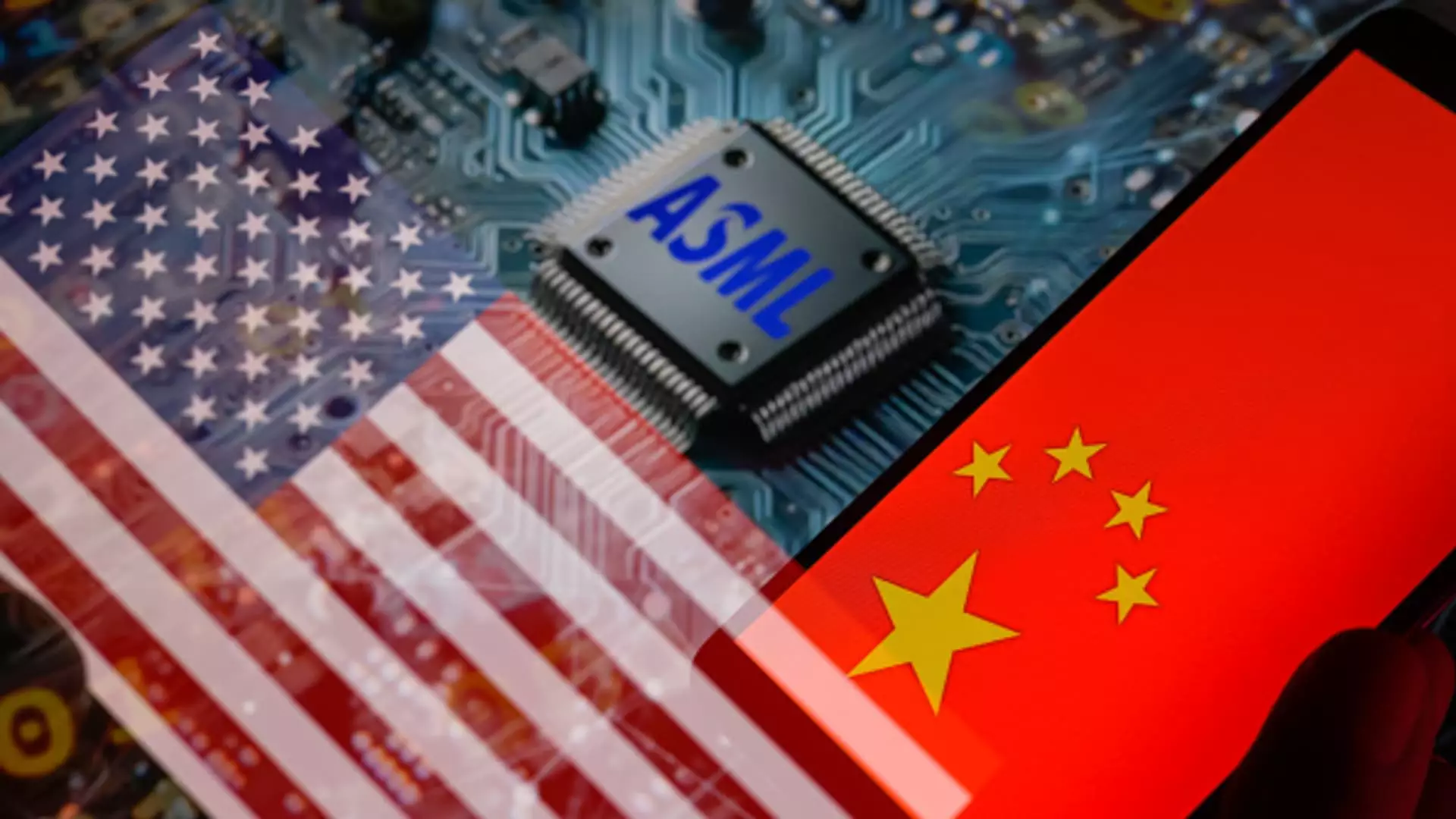ASML, a cornerstone of the semiconductor manufacturing industry, recently provided insights into how U.S. export restrictions on its advanced chip-making tools are likely to affect its revenue in China. In an earnings report shared one day early due to a “technical error,” ASML projected net sales for 2025 will fall between 30 billion euros and 35 billion euros ($32.7 billion to $38.1 billion), marking a decline relative to previous guidance. This forecast underscores the increasing challenges ASML faces amid geopolitical tensions and a dynamic market.
Despite reporting third-quarter sales that reached 7.5 billion euros—surpassing expectations—ASML suffered from lower-than-anticipated net bookings of 2.6 billion euros ($2.83 billion). Market analysts were left disappointed, as the consensus estimate from LSEG had anticipated bookings of 5.6 billion euros. Such an unexpected shortfall resulted in ASML’s shares plummeting by up to 16% in a single day, leading to a staggering loss of over $50 billion in market capitalization.
The Impacts of Geopolitical Tensions
Broader geopolitical factors are weighing heavily on ASML’s projections. Roger Dassen, ASML’s Chief Financial Officer, highlighted a shift towards a “more normalized percentage” from China within their order book. Analysts at UBS have indicated that the revised guidance is primarily linked to developmental delays in semiconductor manufacturing facilities from major clients, including industry giants like Intel and Samsung. The implication is clear: ASML expects a significant reduction in sales from its Chinese clientele—estimated at a decrease of 25% to 30% for 2025.
The concern stems from the fact that Chinese customers have been aggressively stockpiling ASML’s less advanced deep ultraviolet (DUV) machines, seeking to circumvent the looming restrictions on more sophisticated technology. Historically, ASML has not been able to sell its advanced extreme ultraviolet (EUV) lithography machines in China due to prior sanctions. This past practice has left Chinese firms reliant on older-generation DUV machines—crucial for chip circuitry production—which, ironically, has provided temporary relief in terms of sales for ASML.
During the first three quarters of 2024, sales to China surged as clients hurried to acquire ASML’s DUV machines in anticipation of U.S. and Dutch export regulations. Last year, approximately 29% of ASML’s total sales originated from China, a figure projected to decline to around 20% in 2025. This anticipated drop is significant; it reveals how deeply intertwined ASML is with the Chinese market and how reliant it has become on state-of-the-art manufacturing tools.
The announcement of tighter export controls from the Netherlands, which brought ASML machines under a new licensing regime, only exacerbates these market uncertainties. With the Dutch government now positioned to restrict exports of DUV machines, the long-term economic viability of ASML’s supply to China faces serious jeopardy.
Chris Miller, an assistant professor at Tufts University and author of “Chip War,” noted the complexities inherent in this rapidly evolving landscape. Miller pointed out that while ASML stands to face dwindling revenues in China, the accelerated procurement of older machinery has somewhat cushioned the blow since it has led to immediate revenue influx.
Looking ahead, ASML’s outlook for China revenue appears grim. Analysts from Bank of America anticipate a staggering 48% decline year-over-year in revenue coming from China, starkly more severe than the anticipated 3% decrease. Abishur Prakash, head of The Geopolitical Business, echoed these sentiments, underscoring ASML’s vulnerability amid stringent export controls. As the global chip-making landscape continues to separate from China, the implications for ASML’s overall demand for equipment could manifest not only regionally but also on a global scale.
The intersection of international trade restrictions and ever-fluctuating market demands paints a daunting picture for ASML. The company’s ability to adapt to these challenges not only affects its bottom line but also signifies larger shifts in the tech landscape that could reverberate through various sectors reliant on semiconductor technologies. While ASML’s advanced lithography tools have positioned it as a leader in chip-making, the path ahead will test the resilience and strategic foresight of the company in the face of geopolitical hurdles and shifting global market dynamics.

